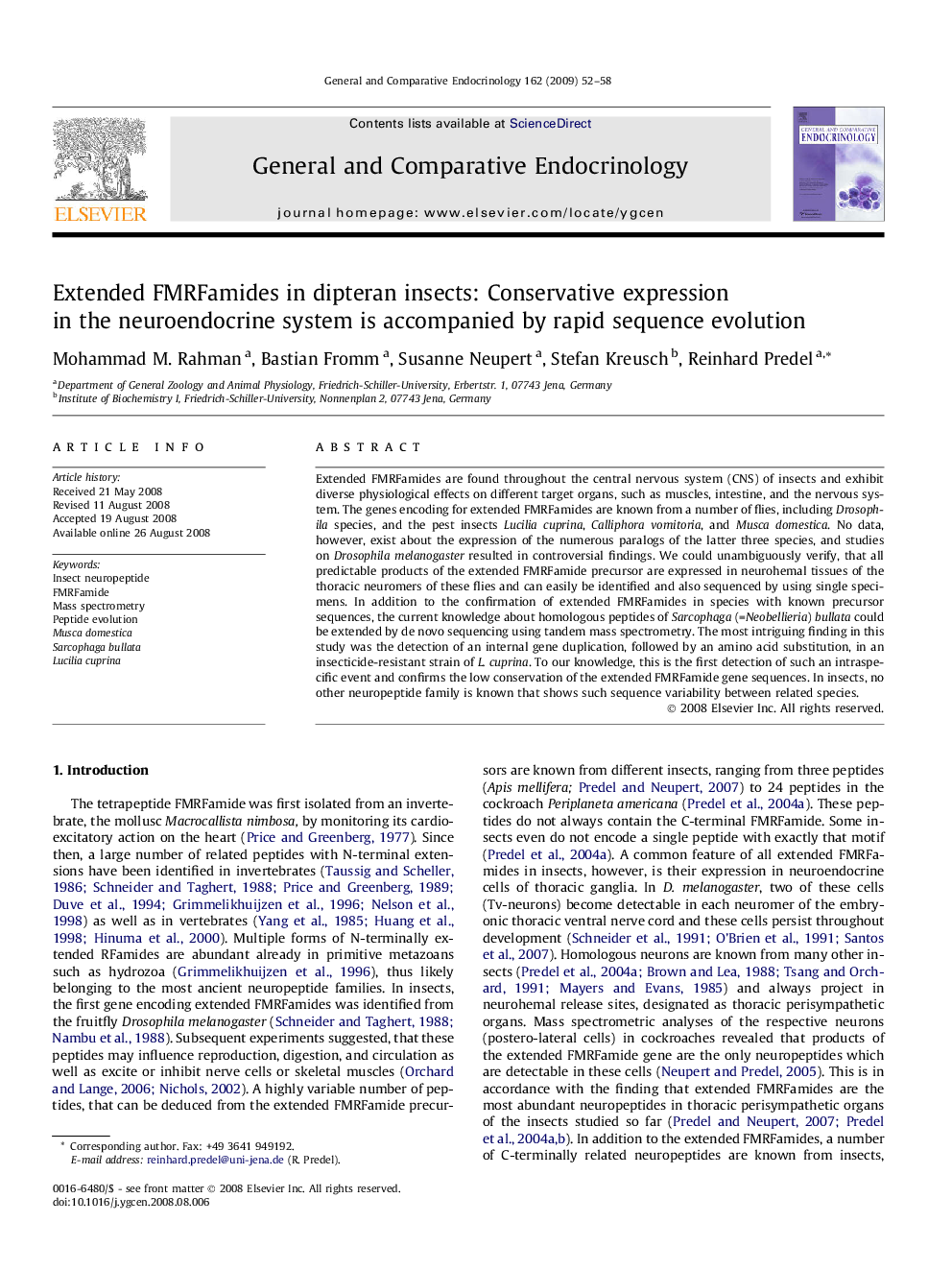| Article ID | Journal | Published Year | Pages | File Type |
|---|---|---|---|---|
| 2801491 | General and Comparative Endocrinology | 2009 | 7 Pages |
Extended FMRFamides are found throughout the central nervous system (CNS) of insects and exhibit diverse physiological effects on different target organs, such as muscles, intestine, and the nervous system. The genes encoding for extended FMRFamides are known from a number of flies, including Drosophila species, and the pest insects Lucilia cuprina, Calliphora vomitoria, and Musca domestica. No data, however, exist about the expression of the numerous paralogs of the latter three species, and studies on Drosophila melanogaster resulted in controversial findings. We could unambiguously verify, that all predictable products of the extended FMRFamide precursor are expressed in neurohemal tissues of the thoracic neuromers of these flies and can easily be identified and also sequenced by using single specimens. In addition to the confirmation of extended FMRFamides in species with known precursor sequences, the current knowledge about homologous peptides of Sarcophaga (=Neobellieria) bullata could be extended by de novo sequencing using tandem mass spectrometry. The most intriguing finding in this study was the detection of an internal gene duplication, followed by an amino acid substitution, in an insecticide-resistant strain of L. cuprina. To our knowledge, this is the first detection of such an intraspecific event and confirms the low conservation of the extended FMRFamide gene sequences. In insects, no other neuropeptide family is known that shows such sequence variability between related species.
